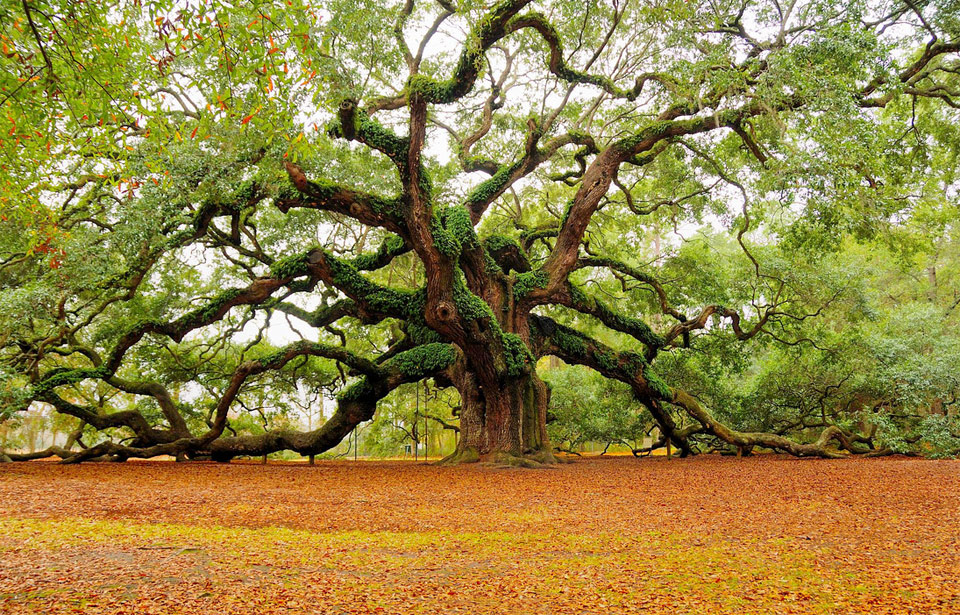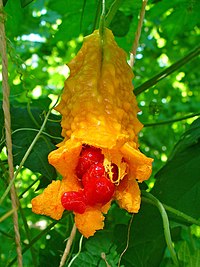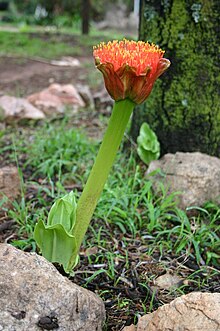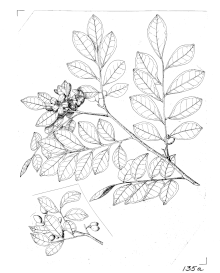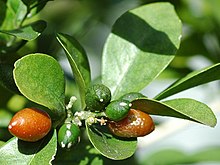To green the deserts, just add... seawater?
30 May 2013
by
Fred Pearce
Can desert be turned into fertile oases using nothing but seawater and sunshine? Yes, but at a price
THE smell of ammonia wafts past me as I
stand next to the world's largest urea and ammonia factory, clutching
the gas mask I've been issued as a precaution. Gas flares glint through
the desert haze. This is Mesaieed, a closed industrial city ringed by
security cordons in the Gulf state of Qatar – and the unlikely setting
for a remarkable oasis.
The heart of this oasis is a
greenhouse full of cucumbers. But this is no ordinary greenhouse: it is
delightfully cool inside, despite the desert heat. Surrounding it are a
series of small garden plots growing desert plants, each walled in by
what look like cardboard hedges. Their effect is startling. When I step
downwind of a hedge, the air temperature instantly drops, as if I have
set foot in front of a powerful air conditioner. And next to the plots
is an array of mirrors for concentrating the power of the desert sun.
The most remarkable thing about this little island of glass and greenery (see "
A briny business: How to green the desert")
is that there is no external supply of either water or electricity –
the plants are kept cool and watered using only sunlight and seawater.
Some see this pilot project as the first
step towards turning hundreds of square kilometres of parched coastal
desert into fertile farms (See "
When desert meets sea").
The head of the project, Norwegian biologist Joakim Hauge, has an even
bigger dream. He wants to do nothing less than revegetate the desert.
And the claim isn't as crazy as it might sound.
The heart of this prototype is the
greenhouse. Worldwide, greenhouses are an ever more popular way to grow
high-value vegetables and flowers. In their controlled environment, it
is possible to get much higher yields than outdoors, making up for the
higher costs. But with their insatiable thirst for water and need for
heating in winter, most greenhouses are not very green.
This greenhouse is different. For
starters, whereas greenhouses in temperate lands are mostly for keeping
crops warm, here in Qatar the main task is keeping them cool. This, says
Hauge as we tour the site, is done by evaporative cooling.
At the front of the greenhouse, facing
into the prevailing northwesterly wind, is a wall of honeycombed
cardboard. It is kept constantly wet, cooling and moistening the air
that enters the greenhouse. The clever part is that no precious fresh
water is wasted on this task; instead, it is done with seawater. The
owner of this industrial complex and one of the project's funders, the
Qatar Fertiliser Company (QAFCO), has built a network of pipes to
deliver seawater for cooling, and the greenhouse taps into that supply.
Inside, in the cool created by the wet
cardboard, I met Stephen Clarkson, who grew cucumbers in the UK for 40
years before heading to Qatar. "We plan to grow 1200 cucumbers per
square metre per year in here," he says. So far it's going well –
Clarkson was about to harvest his second crop of baby cucumbers.
The ultimate test has yet to come.
During my visit, in March, temperatures outside were in the 30s, but in
the low 20s in the greenhouse. In August, it can reach 50 °C outside,
but the greenhouse needs to stay below 30 °C for crops to thrive. Hauge
is confident that it will. As head of the rather grandly named
Sahara Forest Project, the private Norwegian company that built and runs the prototype, he has a lot riding on its success.
Keeping the greenhouse cool and humid
reduces the plants' need for fresh water, but it still has to come from
somewhere. The answer again is seawater. A concentrated solar power
system provides the heat and electricity needed to desalinate seawater
for irrigation, as well as power all the pumps, fans and other
machinery. This is the purpose of the 300 square metres of parabolic
mirrors, which track the sun and focus its rays onto a pipe containing
oil.
But the prototype is more than just a
souped-up greenhouse. The aim is to use seawater to maximum effect,
Virginia Corless, an astrophysicist recruited as the project's science
manager, told me as we headed outside. "What we have is a cascade of
uses for the seawater."
Some goes straight into ponds for
growing marine algae. Algae farms are in their infancy, says Patrick
Brading, a marine biologist fresh from the University of Essex in the
UK, who was preparing a batch of algae for release into a pond. "A lot
of basic things are still unknown. I am trying to answer those
questions, and it is brilliant to work here with a constant supply of
brine to do open-air experiments."
In theory, the algal ponds could
provide anything from feedstock for pharmaceuticals and food supplements
to food for livestock and farmed fish, Brading says. There are also
plans to use seawater to grow a range of native salt-tolerant plants,
which could be used for a similar range of purposes.
The leftover brine from all these
processes – with a salt content of 10 to 15 per cent – is used to wet
the cardboard honeycombs around the small garden plots. "We call them
evaporative hedges," Corless says. Their cooling effect allows desert
plants and a few tough herbs and crops to grow where none would grow
before. The plots are planted with a variety of grasses, as well as
barley, rocket and medicinal plants such as aloe vera. The aim is
ecosystem rehabilitation, not just desert farming. The long-term plan,
she says, is to grow trees as well, which should eventually take over
the cooling role of the cardboard hedges.
Brine from the hedges, now with a
salinity of around 30 per cent, is pumped to evaporation ponds to
produce salt. This can be sold, and also avoids the need to dump
extremely salty waste water back in the sea, which can harm marine life.
None of these technologies is new, says
Corless, but they have never been put together before. Well, not quite
like this. The seawater greenhouse was actually devised two decades ago
by British inventor Charlie Paton, who set aside a successful career
devising special lighting effects for films and theatres to pursue a
vision of growing crops in deserts. I have
written about his work before, and before I left for Qatar I visited him at his lab-cum-home in east London.
Paton has built several pilot greenhouses
to test his ideas. They have won architectural and environmental
prizes, but so far they have failed to catch on. Two –
including the first ever seawater greenhouse, built on Tenerife in 1992
– have since been abandoned. Only one, built in Oman in 2004 on land
vacated by farmers for want of fresh water, still produces crops – and
occasional research papers.
One change in particular concerned
him. Paton came up with his idea during a holiday in the Moroccan
desert, when the windows inside his bus steamed up during a rainstorm
and left a towel he was using as a pillow soaking wet. His greenhouse
design exploits this effect for desalination: cool seawater is pumped
through a maze of pipes in a roof cavity, and fresh water condenses out
of the air – made humid by the seawater evaporators – onto the outside
of the pipes. The system can produce up to 20 litres of water a day per
square metre of greenhouse – more, says Paton proudly, than falls in a
rainforest.
But this elegant scheme failed to
impress his partners. The Australians say that the condenser pipes were a
nightmare because they sprang leaks. Both projects ditched them in
favour of desalination using concentrated solar power, though the Qatar
greenhouse does also collect moisture that condenses on the inside of
the roof at night. Solar desalination is simply more efficient, Hauge
told me as we watched the sun beat down on the mirrors.
Costly cucumbers
But this high-tech approach does add
to the considerable price tag. Back in Doha after our day in the desert,
I went through some back-of-the-envelope sums with Hauge. The Qatari
greenhouse cost $6 million to build, with the money coming from QAFCO
and the Norwegian agrochemicals company
Yara.
Given the anticipated annual harvest of 720,000 cucumbers for 10 years,
that would work out at a capital cost of almost a dollar per cucumber,
even without overheads. That is spectacularly expensive: cucumbers were
on sale in the Doha souks for a fifth of the price.
Together with the fact that the pilot
project was hurriedly constructed to showcase at the UN climate
conference in Qatar last December, some might wonder if the project is
just an expensive publicity exercise, I suggested to Hauge. No, he
insisted. His partners were serious. Of course the cucumbers from the
prototype are expensive, but it was built to carry out research, not to
make money. "Economically, this kind of farming is only feasible at a
large scale."
And there are plans to go large in
Jordan, which is one of the most water-stressed countries in the world
and increasingly reliant on food imports. Later this year, the Sahara
Forest Project hopes to start building a facility near the Red Sea 20
times larger than the Qatar pilot. If all goes well, the idea is to
expand to 200 hectares, and eventually to 3000.
In such a billion-dollar megaproject, the vision is that up to half of the area would be devoted to vegetating the desert (
see diagram)with everything from dune grasses to native trees, such as the nitrogen-fixing thorn acacia (
Acacia tortilis).
Over time, as trees grow and the soil improves, these plots will need
less assistance, allowing resources to be switched to other areas. "This
is not just about sustainable agriculture. It is about restorative
ecology," says Hauge.
There is no doubt that it is possible to green desert plots that are actively cooled and irrigated, and that
planting trees can have all kinds of benefits for the immediate vicinity, from preventing erosion to
providing shelter from the sun and wind.
What isn't clear is what will happen to the untouched land a little
further away. Simple modelling done for the Sahara Forest Project in
2009 suggests such greening will not produce significantly more clouds
or rainfall in the vicinity. However, downwind areas will be cooler and
more humid, and the hope is that this altered microclimate will
encourage more vegetation to grow naturally, with the effect spreading
as positive feedbacks kick in.
This is plausible, says Paul Valdes of
the University of Bristol in the UK, a climate modeller who has studied
why the Sahara abruptly flipped from a green state into desert around
8000 years ago. "But there is probably a threshold before the effect
really starts having an impact," he says, and this threshold will vary
from place to place. "This would not happen in all deserts." In other
words, in some places greening a relatively small area might greatly
boost natural vegetation in the surroundings, but in other places even
greening a very large area would make no difference.
Finding out what the threshold might
be will require both fieldwork and detailed modelling. Complicating
matters further is global warming, which is expected to make dry areas
even drier.
There are cheaper ways to revive desert ecosystems and
turn back advancing deserts. In Niger, on the edge of the Sahara, simple measures such as protecting trees and digging ditches to catch rainwater
have had a dramatic effect. Then again, these approaches won't work in drier regions, or deliver cash crops.
In 20 years, Hauge thinks, seawater
greenhouses could be sprouting everywhere from the Atacama desert of
northern Chile to California and North Africa, where some coastal
aquifers have already been pumped dry. In the Egyptian desert, the
19,000-square-kilometre Qattara depression could be exploited. It is
around 100 kilometres from the coast, but could receive seawater by
gravity as it is below sea level.
Paton has a similar vision. He says
the technology could save 20,000 hectares of greenhouses in Almeria in
southern Spain, which supply fruit and vegetables to much of Europe but
are now running out of underground fresh water. (Another possible
solution is setting up
closed greenhouses which recycle most of their water).
And seawater greenhouses could link up with
Desertec,
the European plan to harvest solar energy in the Sahara desert. A small
fraction of that energy could be kept in Africa to desalinate seawater
for growing crops. Placing solar plants near greenhouses could have
several advantages, such as helping protect them from wind and dust –
this is one of the aspects being investigated in Qatar.
But will investors stump up the vast
amounts needed to realise these dreams? Perhaps. The financial crisis
has dented enthusiasm for grand projects, yet the bottom line has
changed since Paton first came up with his idea. Food prices are
soaring, world demand for greenhouse-grown fruit and vegetables is
rising by 10 per cent a year, and more and more countries are running short of fresh water. The owner of the trial project in Australia,
Sundrop Farms,
this year got approval to build a 16-hectare, commercial-scale seawater
greenhouse, with construction due to start in August. If it can turn a
profit, heads will turn.
Sundrop, though, is focusing on
growing cash crops – its facility has no desert plots or algae ponds.
And perhaps that's telling. My trip left me unconvinced that I will ever
see vast areas of the Sahara turn green as massed ranks of cardboard
hedges advance across the sands. On the other hand, people have talked
for decades about how desalination could be the solution to producing
more crops at a time of growing water shortages. With the seawater
greenhouse, there might at last be a practical way to do so.
Fred Pearce is a consultant for New Scientist based in London
